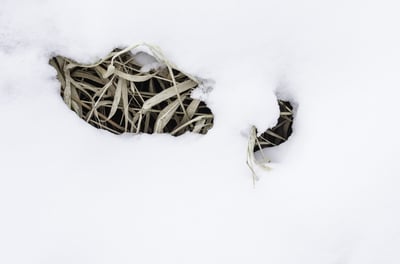 Fighting just one lawn care villain, such as weeds, might seem stressful enough. But when it comes to winter lawn care struggles, you’re typically faced with multiple foes, each of which can undermine your efforts to ensure a beautiful lawn.
Fighting just one lawn care villain, such as weeds, might seem stressful enough. But when it comes to winter lawn care struggles, you’re typically faced with multiple foes, each of which can undermine your efforts to ensure a beautiful lawn.
Snow mold, salt damage, and snow plow damage are all winter adversaries that can impact the appearance of your lawn.
Throughout the preceding spring and fall, you may have done everything you possibly could to make sure your lawn would look its best. But then winter rolls in and you could suddenly feel powerless in the battle for your lawn’s health.
Even if the winter is harsh, you want your lawn to bounce back as quickly as possible come spring. But before that can happen, you must protect your lawn from three menacing winter lawn care villains. Let’s take a closer look at them and how they might be overcome.
Winter Lawn Care Villains
So who exactly are these winter villains that are lurking about and ready to strike at any moment? Let’s get to know these three key troublemakers before talking about how to deal with them.
Villain #1: Snow Mold Fungus
Snow mold is a fungal disease that can damage or kill grass after snow melts. It typically appears in the form of matted down grass in tan, gray, or even pinkish spots on the lawn.
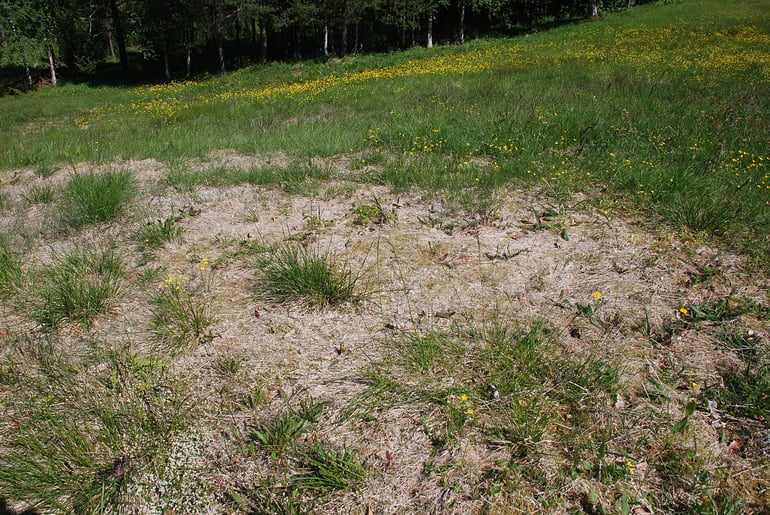
In Cincinnati, Dayton, OH, and Northern Kentucky snow mold isn’t common unless we have a lot of snow cover that remains for multiple weeks on lawns. Keep an eye out for this villain if winter is uncharastically snowy.
Snow Mold Remedy
Don’t leave your grass too long in late fall. Longer grass can more easily get matted down and in the dark and damp environment, become prone to snow mold. Get in that last mowing session and even consider cutting a half inch shorter than our normal recommendation (3 inches in the late fall instead of the normal 3.5).
If your grass is really matted down in some spots and snow mold is obvious in those areas, you can rake out your lawn to help it dry. While most lawns will recover on their own, raking can be helpful if you do find a bad patch.
Villain #2: Salt Damage to Your Lawn
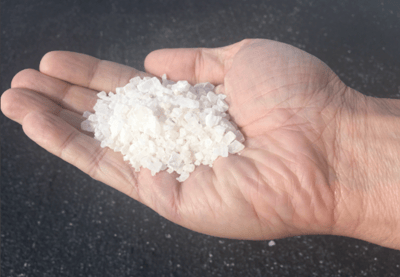 While salt is a useful tool to de-ice roads, driveways, and walkways, it can wreak havoc on your lawn. If excessive salt winds up on your lawn (either accidentally spilled or over-applied there), it will burn the lawn, leaving unsightly brown patches of dead grass.
While salt is a useful tool to de-ice roads, driveways, and walkways, it can wreak havoc on your lawn. If excessive salt winds up on your lawn (either accidentally spilled or over-applied there), it will burn the lawn, leaving unsightly brown patches of dead grass.
Salt Damage Remedy
If you or your snow management company uses salt products around paved areas, extra care must be taken not to get excessive amounts of these products on your lawn. If you’re not the one salting your property and find that the company you’re using is being careless, ask them to not salt so heavily close to the edge of the hardscape so that the product stays where it’s supposed to.
If you find, come spring, that you experienced some salt damage to your lawn, those areas will require repair. In these areas, the lawn will not re-grow and soil may need to be removed, replaced, and re-seeded.
Villain #3: Snow Plow Lawn Damage
If you have your driveway plowed and the plow truck accidentally drives into any area of your lawn, it has the potential to do some real damage in the form of tearing it up. This can also happen along the road if your lawn is at the same grade as the street without a concrete curb as a buffer.
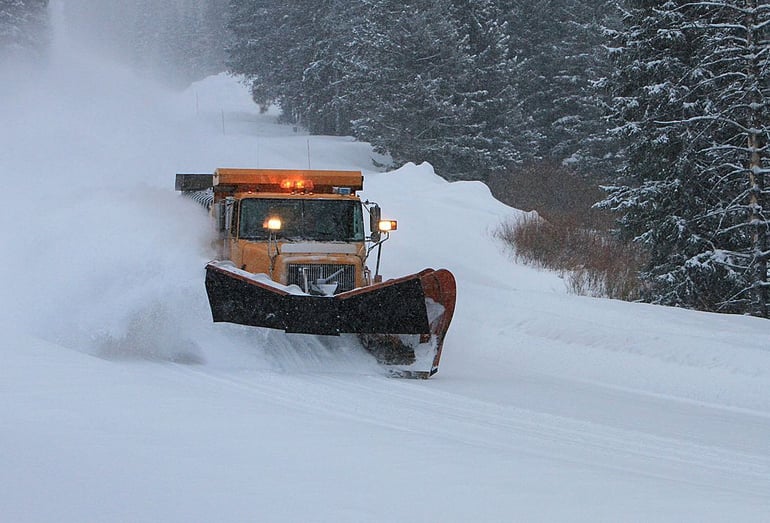
Plow Damage Remedy
The best preventative step you can take to prevent snow plow lawn damage is to insert reflective marking stakes in the late fall to indicate where your hardscape stops and your lawn begins. However, if plow damage does occur to your lawn, you’ll absolutely need to plan to add soil and seed to repair the damage.
A Healthy Lawn: Your Best Defense
As we mentioned, things can go wrong even after you’ve taken every possible step to try and prevent winter lawn care villains from striking. But if you’re working with a lawn care company that offers a comprehensive lawn care program focused on soil health, then your lawn is going to bounce back quicker. That’s because your best defense against disease and damage is a healthy lawn.
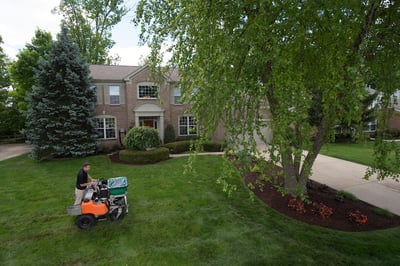 At Oasis Turf & Tree, we want the best for your lawn when you are battling foes throughout the year. In the winter you might be facing snow mold, salt, or plow trucks, but come spring, it will be pesky crabgrass or weeds.
At Oasis Turf & Tree, we want the best for your lawn when you are battling foes throughout the year. In the winter you might be facing snow mold, salt, or plow trucks, but come spring, it will be pesky crabgrass or weeds.
There will always be an enemy to the health of your lawn, but with our comprehensive lawn care program, we can help you take necessary steps to see that you don’t have to be concerned with most of the foes your lawn faces.
Choosing Wisely
While we can’t say without a doubt that winter lawn care villains will not strike your lawn, we can say that your choice in lawn care companies could make a difference if they do.
Even though a lawn with healthy soil will be less prone to diseases like snow mold, there’s no magic wand to fix some problems like plow and salt damage. However, partnering with the right lawn care experts can be a fringe benefit.
Even if it’s not easily addressed with a lawn care program, part of our approach is to give our customers whatever advice and tips we can to help them have a healthy lawn. This costs us nothing more than our expertise, and we’re happy to a resource to help you protect your property.
If you’re ready to go into battle with the healthiest lawn possible and want to learn more about lawn care programs we offer in Cincinnati, Dayton, Ohio or Northern Kentucky, request a quote, then sit back and relax knowing that you have experts nearby should problems arise.
Image Sources: pink snow mold, snow plow
